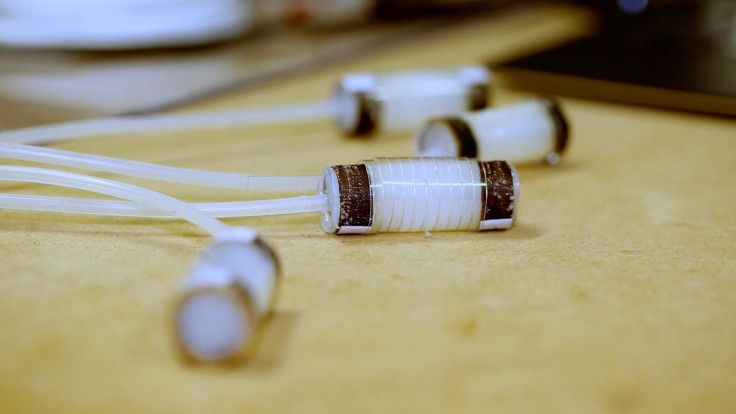Soft Robots Similar To Muscles Are Reconfigurable And A Potential Tool For Physical Therapy

Researchers from Reconfigurable Robotics Lab at École polytechnique fédérale de Lausanne have created a soft and flexible robot. Made of elastomers—synthetic polymers with elastic properties—like silicon and rubber, the soft robots are powered by muscle-like actuators.
Since the soft robots are cheap to produce and can be manufactured on a large scale, they can be applied on many levels. In Nature’s journal Scientific Reports, the scientists reveal potential applications of the soft robots, which range from biomimetic systems and home care to handling fragile objects and patient rehabilitation.
"Our robot designs focus largely on safety," said Jamie Paik, the director of the RRL, in a statement. "There's very little risk of getting hurt if you're wearing an exoskeleton made up of soft materials, for example.”
In addition to being soft and flexible, the robots are reconfigurable and have a specially designed “soft balloon” body allowing it to stretch up to six times their usual length and bend. Their movements, controlled by altering the air pressure in the balloon, are similar to human muscles—which is why they can potentially be used in physical rehabilitation.
“We conducted numerous simulations and developed a model for predicting how the actuators deform as a function of their shape, thickness and the materials they’re made of,” said Gunjan Agarwal, the lead author of the article.
The team has created a rehabilitation belt with physical therapists at the University Hospital of Lausanne.
“We are working with physical therapists from the University Hospital of Lausanne (CHUV) who are treating stroke victims,” said Matthew Robertson, the researcher in charge of the project. “The belt is designed to support the patient’s torso and restore some of the person’s motor sensitivity.”

Currently, researchers are using the soft actuators to create robots that can adapt to cramped, hostile environments.
“Using soft actuators, we can come up with robots of various shapes that can move around in diverse environments,” said Paik. “They are made of inexpensive materials, and so they could easily be produced on a large scale. This will open new doors in the field of robotics.”
© Copyright IBTimes 2025. All rights reserved.




















